Workshops Held by Festival Delegates
Be a Magician! Using magic illusions to teach science
Friday, 1 November, 11:30-12:30 | Room WS1
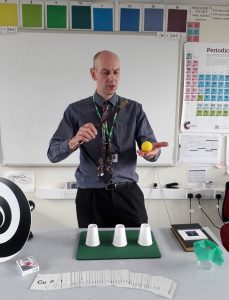 Adrian Allan – Dornoch Academy – United Kingdom
Adrian Allan – Dornoch Academy – United Kingdom
Physics, chemistry
Spectacular science demonstrations and magic illusions have many things in common. They involve practice, showmanship, audience interaction and suspense followed by a moment of astonishment.
This workshop will demonstrate how science principles can be used to create magical illusions to enhance lessons and teach concepts. During the workshop you will learn how to shrink your own head, bend metal using your mind and make a coin pass through another solid object. A true story of a how a French magician quelled a revolt in North Africa by removing a man’s strength will be discussed. A practical method of making ghosts appear and disappear will be demonstrated as well as a flying carpet illusion. You will also learn how to cut and restore newspaper, vanish water and make objects invisible using new and old science technology. These demonstrations can be used by teachers but have also been taught to pupils who have in turn demonstrated these illusions to other pupils and parents.
Biocube Project-Biodiversity -“Slow down and look at closely”
Friday, 1 November, 11:30-12:30 | Room WS2
Sinem Mankir Öztan – Açi Okullari – Turkey
Biology, citizen science, natural science
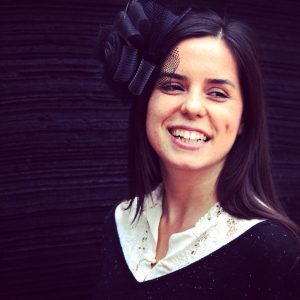 How much life can a student discover in a small area in a short time with low cost material? In this workshop, you will explore how I organized a field trip and implemented this inquiry-based learning project in order to experience how biological systems function and interact each other out of class. Teachers can use this method with low cost materials everywhere when they are doing camp, class, club or after-school activities. I will explain the all preparation steps process of before/during/after the trip. You will experience building up the cubes with different materials, placing your own cubes in a model of “a sample Cascais ecosystem” and working as like a citizen scientist. In addition, you will learn how you can extend your won project with online tools. I am inspired by Smithsonian Citizen Science research.
How much life can a student discover in a small area in a short time with low cost material? In this workshop, you will explore how I organized a field trip and implemented this inquiry-based learning project in order to experience how biological systems function and interact each other out of class. Teachers can use this method with low cost materials everywhere when they are doing camp, class, club or after-school activities. I will explain the all preparation steps process of before/during/after the trip. You will experience building up the cubes with different materials, placing your own cubes in a model of “a sample Cascais ecosystem” and working as like a citizen scientist. In addition, you will learn how you can extend your won project with online tools. I am inspired by Smithsonian Citizen Science research.
CoALA – Code A Little Animal
Friday, 1 November, 11:30-12:30 | Room WS3
Imma Abad – Cor de Maria – Spain
Mirek Hancl – Lessing-Gymnasium Uelzen – Germany
Biology, citizen science, natural science
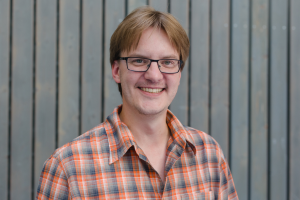 In this workshop you will learn how to create an interactive “pet” by using a microcontroller, cardboard and copper tape. The single-board controller is programmed with a graphical programming language to capture sensor readings (i.e. moisture, multi-touch, NFC) and to react to them with corresponding image and sound signals. This way the needs of a real pet (food, water, exercise etc.) are simulated using external sensors and algorithms. The pet simulator is based on Calliope mini and is 1:1 transferable to the BBC micro:bit. The project is appropriate both for primary and secondary school students, the workshop materials can also be mixed. Two additional materials are presented during the workshop as an outcome of the joint project: students can create a pet feeder app for Android devices, and the CoALA workshop is ported to the Arduino platform to build 3D pets with low-cost hardware.
In this workshop you will learn how to create an interactive “pet” by using a microcontroller, cardboard and copper tape. The single-board controller is programmed with a graphical programming language to capture sensor readings (i.e. moisture, multi-touch, NFC) and to react to them with corresponding image and sound signals. This way the needs of a real pet (food, water, exercise etc.) are simulated using external sensors and algorithms. The pet simulator is based on Calliope mini and is 1:1 transferable to the BBC micro:bit. The project is appropriate both for primary and secondary school students, the workshop materials can also be mixed. Two additional materials are presented during the workshop as an outcome of the joint project: students can create a pet feeder app for Android devices, and the CoALA workshop is ported to the Arduino platform to build 3D pets with low-cost hardware.
Crater and Summit – two faces of a candle
Friday, 1 November, 11:30-12:30 | Room WS4
Tobias Mahnke – Carl-Strehl-Schule blista – Germany
Tanja Schapat – Carl-Strehl-Schule blista – Germany
Chemistry, science, general studies
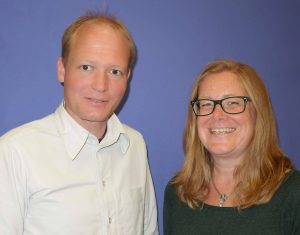 Fire is a fascinating phenomenon for humans. When it comes to teaching this concept, there are limitations. This is why teachers often rely on graphics showing the different areas of a flame with corresponding temperatures. This method is purely academic and can be boring while posing additional problems for visually impaired students.
Fire is a fascinating phenomenon for humans. When it comes to teaching this concept, there are limitations. This is why teachers often rely on graphics showing the different areas of a flame with corresponding temperatures. This method is purely academic and can be boring while posing additional problems for visually impaired students.
After a short general introduction to the challenges of teaching blind and visually impaired students, several different experiments can be observed and tried out that cover the concept of a flame for different classes and ages. They provide short pedagogical and methodical reflections but mainly focus on self-experience. Participants will try out the experiments while blindfolded to be able to experience it with their remaining senses.
Furthermore, methods of teaching theoretical concepts to blind and visually impaired students will be shown and discussed. Notable examples are the depiction of structural formula using magnetic symbols, the collection and fixation of findings and the structure of tests.
GimLit Fortress
Friday, 1 November, 11:30-12:30 | Room WS5
Branko Koprivnikar – Gimnazija Litija – Slovenia
Physics, computer science/ICT
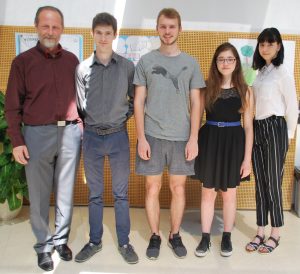 The prince wants to save the princess from the frightening dragon.
The prince wants to save the princess from the frightening dragon.
In order to achieve this, the prince must:
- create a microscope to read the code from a microfilm. The microscope has to be made by placing a droplet of water on a flat piece of glass. Gravity and combination of more droplets can be used to achieve greater magnification.
- find out how to create a program by which the microprocessor recognizes the code and runs the servomotor to open the door towards the accessories (neodymium magnet, battery, copper wire).
- make a tunnel made of copper wire and send a train made of a permanent magnet and a battery through this tunnel. The copper wire has to be wrapped around a rod to obtain a hollow coil. By proper fitting of permanent magnets to the ends of the battery, a magnetic train is made that creates an electromagnetic tunnel and the train with Prince can travel through it.
The prince can now chase the frightening dragon away and hug his beloved princess.
History of Maths in Classroom: an educational challenge
Friday, 1 November, 11:30-12:30 | Room WS6
Paulo Gil – Escola Sec.de Pinheiro – Portugal
Mathematics, history
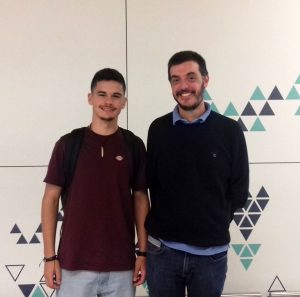 This workshop intends to show the role that the history of mathematics can play when integrated into the classroom context. In this sense, tasks based on historical sources will be proposed, so that the teachers participating in the workshop can not only reflect on the pertinence of this topic, but also solve some problems and discuss possible uses of these tasks with their students in the classroom.
This workshop intends to show the role that the history of mathematics can play when integrated into the classroom context. In this sense, tasks based on historical sources will be proposed, so that the teachers participating in the workshop can not only reflect on the pertinence of this topic, but also solve some problems and discuss possible uses of these tasks with their students in the classroom.
Oranges and Lemons
Friday, 1 November, 11:30-12:30 | Room WS7
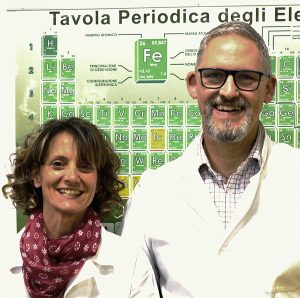 Francesca Butturini – Educandato Agli Angeli, Verona – Italy
Francesca Butturini – Educandato Agli Angeli, Verona – Italy
Gordon Kennedy, Liceo Agli Angeli, Verona – Italy
Chemistry, organic chemistry, physical chemistry, optical physics
This workshop will briefly introduce the didactic approach behind the “Oranges and Lemons” project introducing the three main pillars of the project: the extraction, analysis and optical characteristics of limonene, before focusing on the practicalities of building a working polarimeter using easily available materials while illustrating some of the problems which may be encountered during its construction.
Participants working in small groups will construct a polarimeter to take away with them and are encouraged to bring two (empty!) 1kg plastic yoghurt pots with their lids.
A series of laboratory experiences using the polarimeter will be presented including the measurement of the optical rotation of limonene.
Affordable Experiment for Every Pupil
Friday, 1 November, 16:00-17:00 | Room WS1
Nasko Stamenov – National High School of Science and Mathematics – Bulgaria
Biology, chemistry
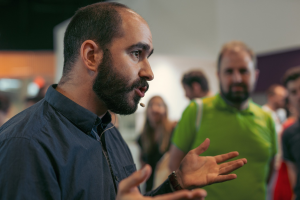 This workshop shows a set purposely made for low-cost chemistry classes. Participants will be able to experience a lesson from the pupils’ point of view. The set is optimized work environment – glassware is omitted, the workplace is reduced in size, the reagents are in smaller quantities all without hurdling the learning process.
This workshop shows a set purposely made for low-cost chemistry classes. Participants will be able to experience a lesson from the pupils’ point of view. The set is optimized work environment – glassware is omitted, the workplace is reduced in size, the reagents are in smaller quantities all without hurdling the learning process.
The workshop itself takes place in a classroom environment – participants will work in groups of two and we will experiment according to the Bulgarian 7th grade chemistry curriculum. The experiments include, but are not limited to signs of a chemical reaction – participants will mix compounds, which will yield a result in gas production, change in color etc., or using a pH indicator to check the acidity of household compounds.
The workplace is minimal and takes up the space of an A4 sheet of paper. All experiments are carried out by the means of pipetting and are done with great care for safety.
Braga Through a Technological “Lens”
Friday, 1 November, 16:00-17:00 | Room WS2
Liliana Fernandes – Ag. Escolas de Alberto Sampaio – Portugal
Jorge Reis – Ag. Escolas de Alberto Sampaio – Portugal
Mathematics, computer science/ICT, history, robotics, language, social studies
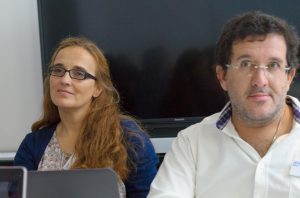 This project leads us through a journey along local history and architectonic treasures and we will begin with an overview of its development and products developed by the students, and their impact on sharing local culture.
This project leads us through a journey along local history and architectonic treasures and we will begin with an overview of its development and products developed by the students, and their impact on sharing local culture.
Participants will receive advice on how to adapt and apply this project in their own reality and have the opportunity to get familiar with Tynkercad, creating students’ accounts and experiment with the tools used by students to model pictures and transform them into 3D printings of the monuments. We will give an overview of the apps that can be used to build virtual visits and expeditions, and thus creating accessible information both to the community and tourists. In the end participants will also experiment with a 3D printer aimed at primary school students, and check printed models as well as try our QR codes with the available virtual tours.
Teachers are invited to bring their own devices to use the suggested educational apps. We strongly advise participants do download in advance the following app onto their smartphone or tablet: Mentimeter.
Can You See the Light? To see, feel and understand the properties of light
Friday, 1 November, 16:00-17:00 | Room WS3
Astrid Pösl – SFZ Bad Saulgau – Germany
Sonja Vochezer – SFZ Bad Saulgau – Germany
Science, art, language
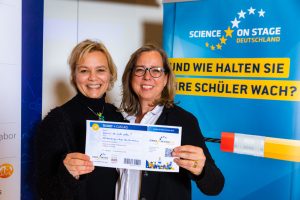 In this project, primary students work on, experience, prove and understand the properties of light through a wide variety of experiments with simple materials. Is light visible and where do the colours of the rainbow hide? Can light colours be mixed like watercolours?
In this project, primary students work on, experience, prove and understand the properties of light through a wide variety of experiments with simple materials. Is light visible and where do the colours of the rainbow hide? Can light colours be mixed like watercolours?
In the beginning of the workshop, a couple of demonstration experiments (catching light, making light visible, straightforward spreading of light) are introduced. A pinhole camera is now built from everyday materials and the function is explained based on a drawing. Subsequently, various stations will be offered: creation of shadows; mixture of light colours; production of spinning tops – new colours emerge; tile game – change of colour perception; reading secret writings and designing new ones.
ESCAPING with SCIENCE
Friday, 1 November, 16:00-17:00 | Room WS7
Christina Aristodimou – St. Paul & St. Peter High School, Limassol – Cyprus
Georgios Villias – 2nd High School of Agioi Anargiroi, Athens – Greece
Physics, biology
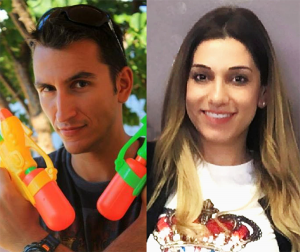 Escaping boring lectures. Escaping exam stress. Escaping daily school routine. Escaping working alone. ESCAPING with SCIENCE!
Escaping boring lectures. Escaping exam stress. Escaping daily school routine. Escaping working alone. ESCAPING with SCIENCE!
For 50 minutes, fellow science educators will actively engage themselves in an exciting educational escape room activity (EER). EERs are innovative game-based didactic approaches that offer an immersive learning experience, promote active participation and facilitate students to practice problem-solving and other 21st century skills (critical thinking, creativity, collaboration, communication).
Participants will experience first-hand the same problems, difficulties, surprises and feelings that students have during such an alternative educational approach to science learning. By showcasing one of the EER activities that we developed during our joint project, our ultimate goal is to get teachers inspired on how they could actually create and implement their own EER activities, using their personal educational interests, scientific expertise and artistic touch.
It’s All in Our Hands
Friday, 1 November, 16:00-17:00 | Room WS4
Sacha Glardon – Gymnasium Bäumlihof – Switzerland
Thomas Scheuber – Gymnasium Kirschgarten – Switzerland
Physics, biology, chemistry
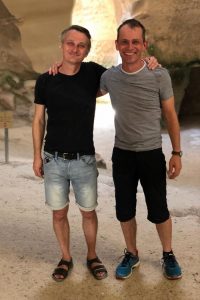 Our hands are fascinating precision tools. We grasp, indicate, touch, write, communicate and work with our hands. The upright walk freed our hands and they developed into fine motor and multifunctional gripping organs. And the brain’s evolutive development has progressed in parallel to ensure the sensory and motor performance of the hand.
Our hands are fascinating precision tools. We grasp, indicate, touch, write, communicate and work with our hands. The upright walk freed our hands and they developed into fine motor and multifunctional gripping organs. And the brain’s evolutive development has progressed in parallel to ensure the sensory and motor performance of the hand.
Hands-on: With a broad variety of simple but also complex experiments, we will demonstrate different aspects and basic concepts of biology. The hand serves us as a model organ and allows us to investigate problems of anatomy, physiology, neural and behavioural biology, genetics and evolution. You will learn about phenomena such as the right- and left-handedness, the gripping force or the fact, that real hand washing is not that easy.
The hiLyte Battery
Friday, 1 November, 16:00-17:00 | Room WS5
Patricia Descombes – Gymnase de Renens – Switzerland
Annick Vidonne – Gymnase de Renens – Switzerland
Physics, chemistry
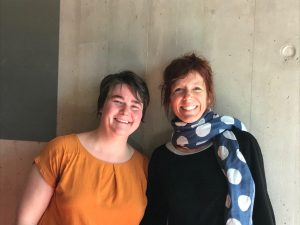 How can chemistry enable production of clean energy?
How can chemistry enable production of clean energy?
In this workshop you will build an ecological and efficient battery with cheap, non-toxic and renewable materials. A simple reaction is used to convert chemical energy into electrical energy in order to power devices such as motors or lamps. It can even be used to charge your mobile phone.
In addition to being environmentally friendly, the advantage of this battery is that all its components can be assembled separately ensuring a full understanding of the set-up.
The battery is made of a biodegradable plastic case in which an iron sheet, a coffee filter, and a carbon felt soaked in an iron solution are inserted one after the other. The participants will have to mount this battery, test its functionalities and will be asked to work together to take part in a thrilling car race!
This workshop is intended for all sciences teachers from elementary to high school.
The physics of a DIY sand pendulum: a project about physics, mathematics, engineering and art
Friday, 1 November, 16:00-17:00 | Room WS6
Nicole Fux – Busleyden Atheneum campus Pitzemburg – Belgium
Physics, mathematics, STEM
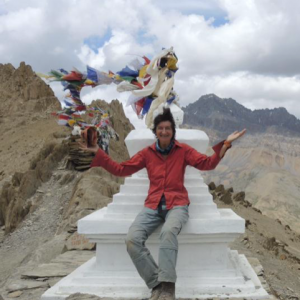 The multi-dimensional pendulum is a fascinating hands-on device which is excellent for integrating physics, mathematics, art and engineering into one project. Designing and constructing the pendulum will lead the students to further investigation on the physics of the simple harmonic motion, the mathematics of Lissajous curves and the various applications in astronomy, electromagnetism and art.
The multi-dimensional pendulum is a fascinating hands-on device which is excellent for integrating physics, mathematics, art and engineering into one project. Designing and constructing the pendulum will lead the students to further investigation on the physics of the simple harmonic motion, the mathematics of Lissajous curves and the various applications in astronomy, electromagnetism and art.
In the workshop, we’ll start by a short overview of this project done by 17-year old students last year. For the practical part you will work in small groups. Each group will build a DIY sandpendulum (we provide all the necessary materials) and investigate the mathematics of the movement of the pendulum trough a simulation (one laptop per group is needed for this part). At the end we’ll exchange ideas about how to integrate this project in your curriculum.
Participants should bring their own laptop to the workshop (minimum 1 laptop per 2 participants).
High and Low Pressure
Saturday, 2 November, 11:30-12:30 | Room WS1
Zdeněk Hubáček – Gymnázium Uherské Hradiště – Czech Republic
Physics, biology
My project will show the DIY construction of a simple vacuum chamber (for education purposes and for everyday use in the kitchen), a U-pipe manometer (which will measure your blood pressure and the pressure in your lungs), a pneumatic lifter (to lift yourself up) and a multifunctional pressure chamber. I also will show a set of experiments enabled by this equipment. All devices are light, portable and clearly show the principles behind them.
Live, Not Survive!
Saturday, 2 November, 11:30-12:30 | Room WS3
Iveta Labunska – Skrunda Secondary school – Latvia
Inese Pickaine – Skrunda Secondary school – Latvia
Physics, biology, chemistry, STEM, health education, geography
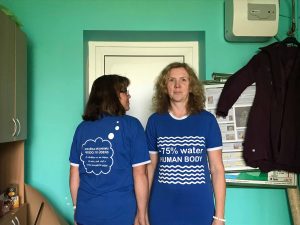 You will learn about the practical ways in which children, young people, and adults can make sense of various natural processes with secondary raw materials, natural materials, foods and very little everyday chemicals. To answer your questions, the little thumbling from Latvia will take you on a journey through moss, water reservoirs, layers of earth and up to the sea, getting to know them and exploring, modelling, studying and making conclusions. We are looking for a group of 24 “tourists” for the trip!
You will learn about the practical ways in which children, young people, and adults can make sense of various natural processes with secondary raw materials, natural materials, foods and very little everyday chemicals. To answer your questions, the little thumbling from Latvia will take you on a journey through moss, water reservoirs, layers of earth and up to the sea, getting to know them and exploring, modelling, studying and making conclusions. We are looking for a group of 24 “tourists” for the trip!
Magnifying Curiosity Through the Mail – origami microscopes
Saturday, 2 November, 11:30-12:30 | Room WS4
Paul Stinson – Sun West Distance Learning Centre – Canada
Biology, STEM
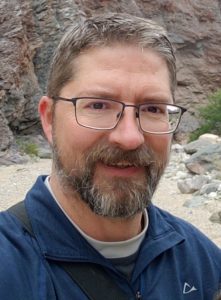 A glass sphere is an example of an object that can magnify and bring us closer to viewing and understanding the microscopic world first-hand. So is a water droplet. Foldscopes are inexpensive, cardboard origami microscopes that use a glass bead as a magnifier, and can magnify over 100x. The simple yet effective technology allows for connections to biology/life sciences, physics/optics, as well as an exemplar of engineering/design.
A glass sphere is an example of an object that can magnify and bring us closer to viewing and understanding the microscopic world first-hand. So is a water droplet. Foldscopes are inexpensive, cardboard origami microscopes that use a glass bead as a magnifier, and can magnify over 100x. The simple yet effective technology allows for connections to biology/life sciences, physics/optics, as well as an exemplar of engineering/design.
Low-cost “frugal” technologies like Foldscopes can allow students to access and explore the otherwise hidden world around them, whether in a classroom, home school environment, or on a field trip. This experience can be further enhanced by interacting with digital technologies and social media to collaborate with others through an online community.
Workshop participants will be given a brief overview of this technology, followed by a short discussion of ideas and applications. We will then use pre-assembled Foldscopes to view prepared slides, followed by the opportunity to assemble individual Foldscope kits to make and view (and share) their own slides.
MathsMagic
Saturday, 2 November, 11:30-12:30 | Room WS5
Dieter Kadan – Austrian St. Georgs Kolleg, Istanbul – Austria
Mathematics, magic
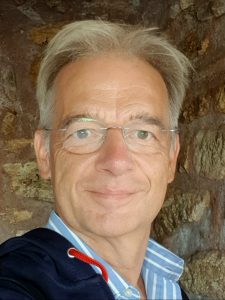 Is it possible to locate a secretly chosen playing card simply by calculating the sum of digits of a spectator’s favourite number? Who knows how to make a piece of a puzzle vanish with the help of a trigonometric function?
Is it possible to locate a secretly chosen playing card simply by calculating the sum of digits of a spectator’s favourite number? Who knows how to make a piece of a puzzle vanish with the help of a trigonometric function?
Magic tricks like these attract our pupils’ attention and raise their curiosity about mathematics. The workshop “MathsMagic“ is designed for secondary – and higher level teachers interested in teaching with the help of magic even if they have never tried/performed a magic trick before. In no case mathematics is presented as a kind of “mysterious magic“. The slogan says “Mathematics is the key to the magic secret“.
Please take a deck of playing cards (Poker, Canasta, Uno etc.) with you if possible.
Superficial Changes, New Properties!
Saturday, 2 November, 11:30-12:30 | Room WS6
Carme Artigas – La Salle Montcadav – Spain
Fina Guitart – CESIRE Department of Education – Spain
Chemistry, digital technology
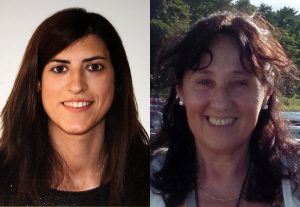 During the workshop participants will explore properties of magic sand and kinetic sand. They will try to explain this properties and the difference between them, and with the common sand. We will show examples using some animatons and 3D printed molecules and structures. Participants will investigate some methods to prepare magic sand and kinetic sand homemade. We will present a proposal of how to use experiments performed in classroom to engage students in a teaching-learning sequence with curricular content and competencies. We will present some posters produced by students and discuss about learning outcomes.
During the workshop participants will explore properties of magic sand and kinetic sand. They will try to explain this properties and the difference between them, and with the common sand. We will show examples using some animatons and 3D printed molecules and structures. Participants will investigate some methods to prepare magic sand and kinetic sand homemade. We will present a proposal of how to use experiments performed in classroom to engage students in a teaching-learning sequence with curricular content and competencies. We will present some posters produced by students and discuss about learning outcomes.
Walking Along the Chromosomes
Saturday, 2 November, 11:30-12:30 | Room WS2
Cinzia Grazioli – CusMiBio, Milano – Italy
Livia Pirovano – ITIS Marconi di Gorgonzola/CusMiBio – Italy
Biology, genetics, bioinformatics
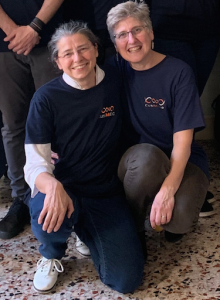 Introduction: we will show how to prepare information sheets about genes (“gene card”) using scientifically valid websites and how to create posters with the chromosomes and QR code that allow to access the gene cards.
Introduction: we will show how to prepare information sheets about genes (“gene card”) using scientifically valid websites and how to create posters with the chromosomes and QR code that allow to access the gene cards.
The game: The participants will be divided into groups and will have at their disposal:
- tablets (or their smartphones) with QR code reader, poster of chromosomes with QR codes of genes, each QR code allowing to access to all the information collected in the gene card, (gene, protein, mutations, relevant aspects of the associated disease, curiosities, links to videos, etc.).
- some plastic coated cards describing diseases with phenotype images and/or information on the gene responsible for the pathology.
They will have to find (hunting) the gene responsible for pathology described in the card.
The team that captures more genes and respond correctly to question regarding genes will win.
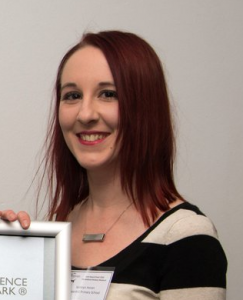 You’re Fired! A Dramatic Approach to Primary Science
You’re Fired! A Dramatic Approach to Primary Science
Saturday, 2 November, 11:30-12:30 | Room WS7
Kathryn Horan – Pudsey Waterloo Primary, Leeds – United Kingdom
Science, drama, speaking & listening skills
This workshop session begins with an active warm-up activity, before taking a look at the rationale behind our dramatic approach to science teaching and the many reasons to utilise drama activities in science lessons, including a consideration of existing research in this area. We’ll then take a brief look at existing resources from other teachers and professionals that inspired our project. The session then moves on to detail the different strategies we used, how they can be used for formative assessment and how they could be enhanced using ICT. Participants will then have the opportunity to unleash their inner actors and trial the activities themselves, while considering how these could be applied in their own settings. We finish with an opportunity to share ideas and a look at how other educators have used these activities.
